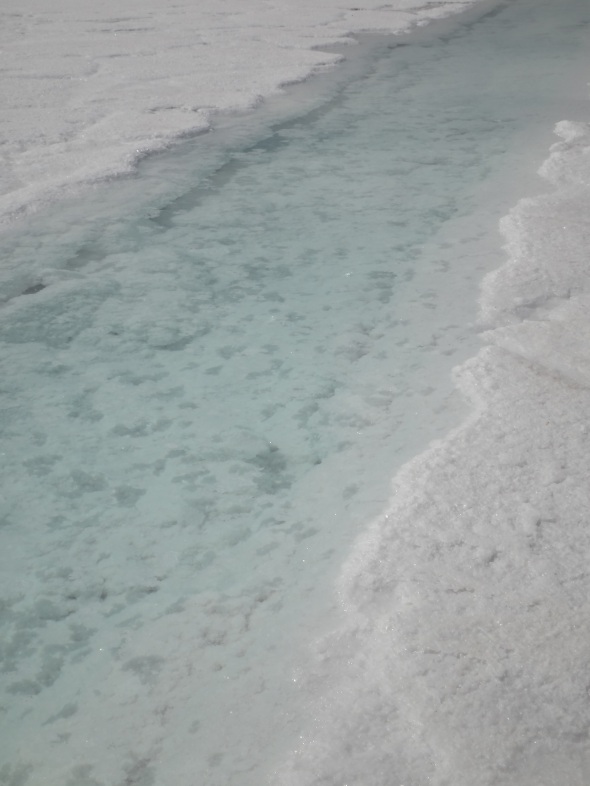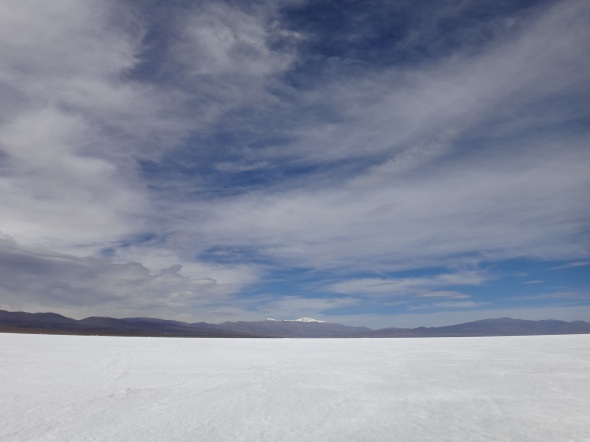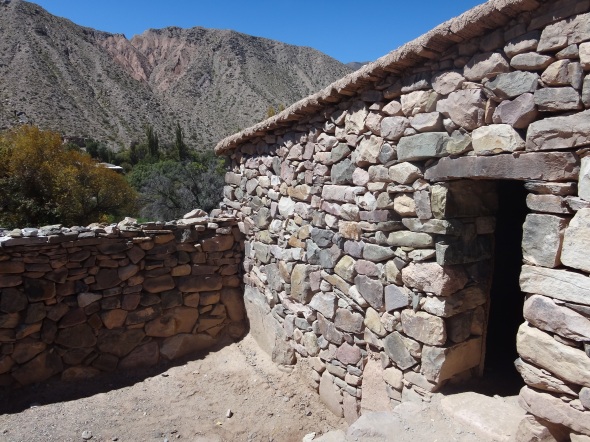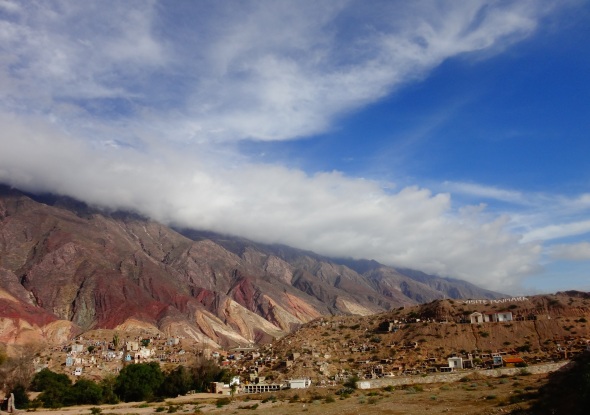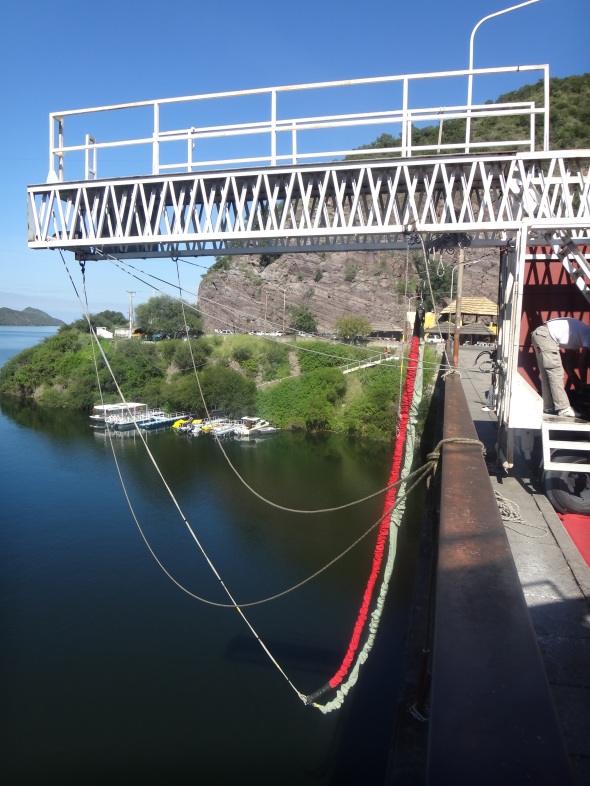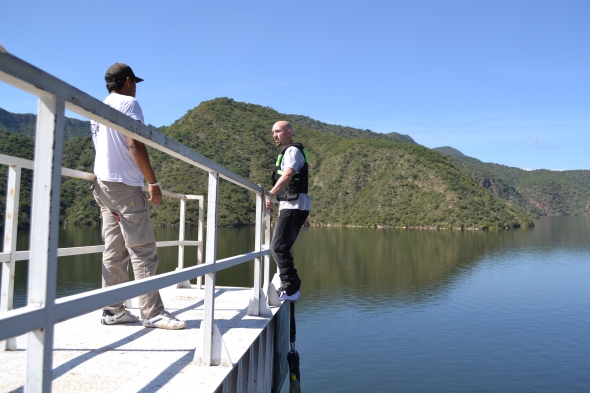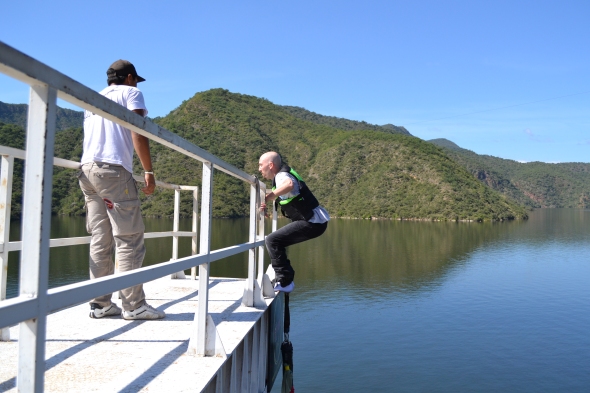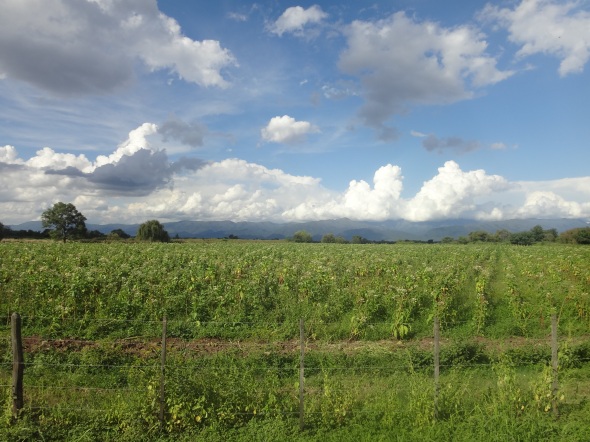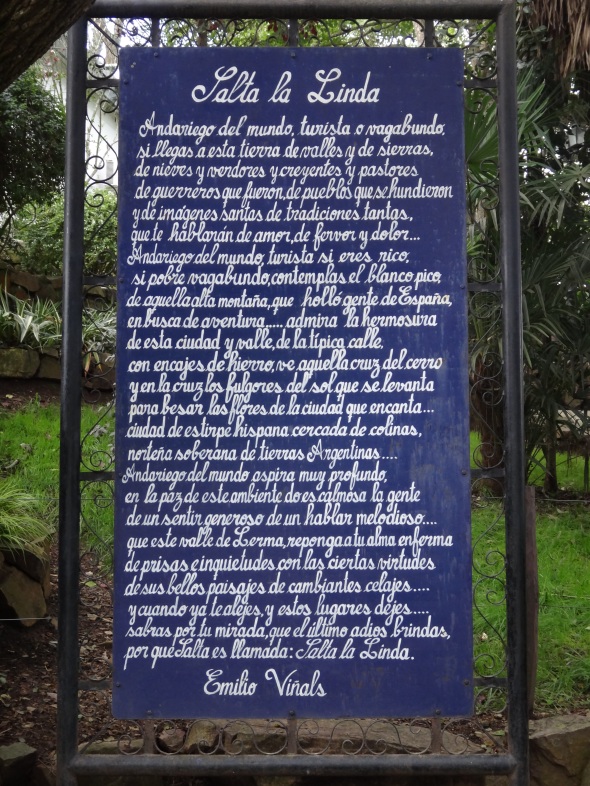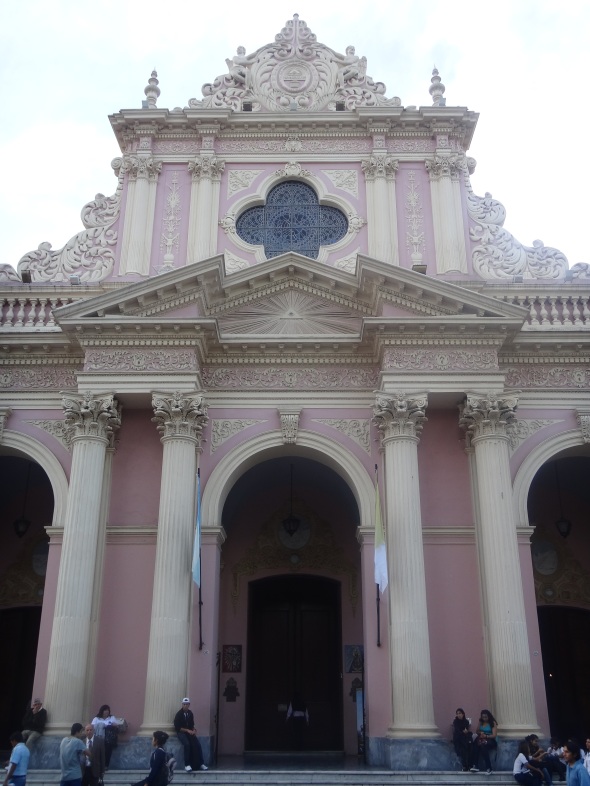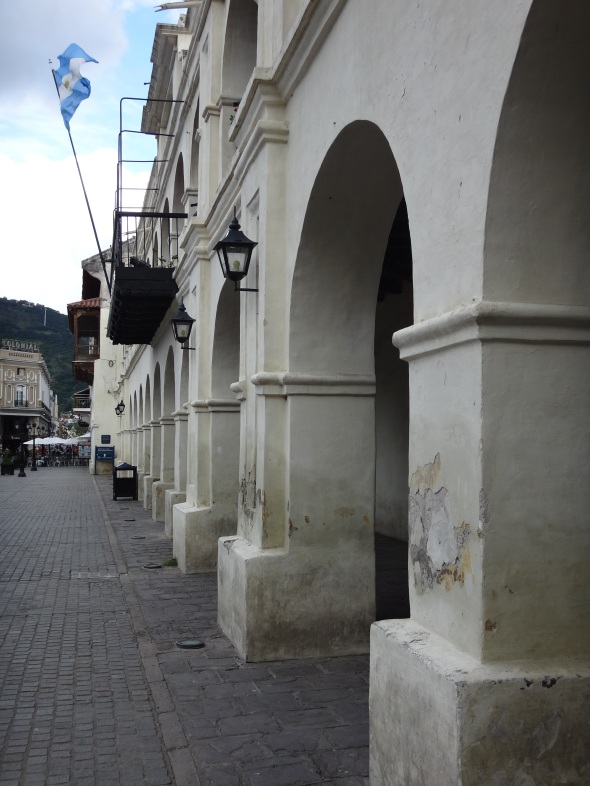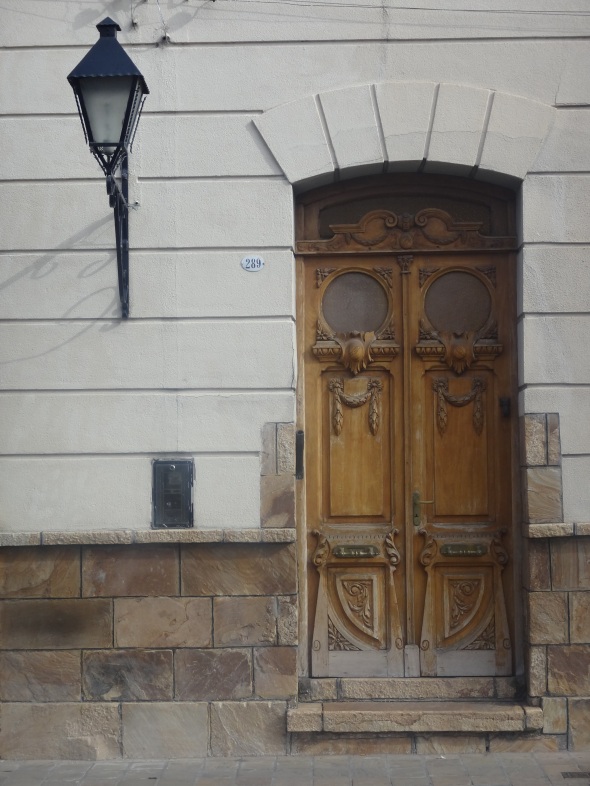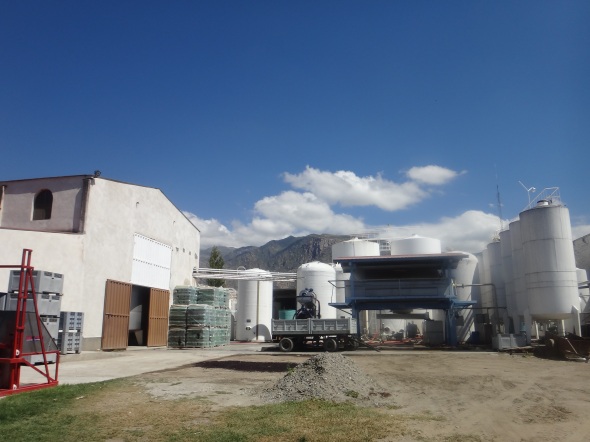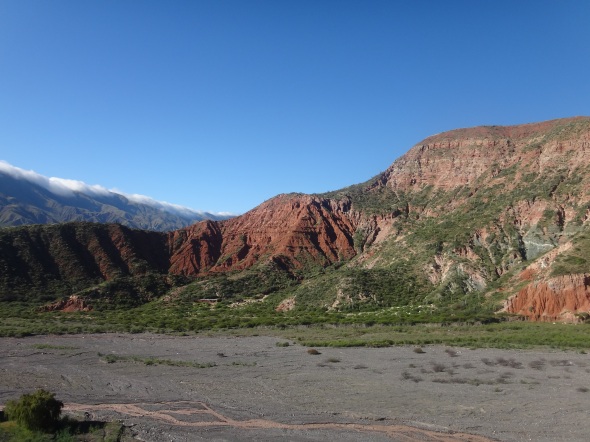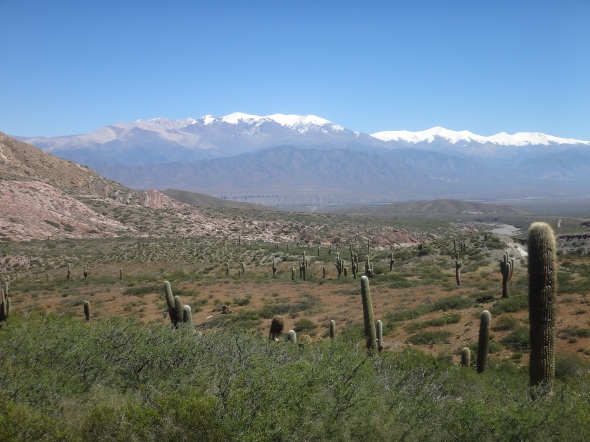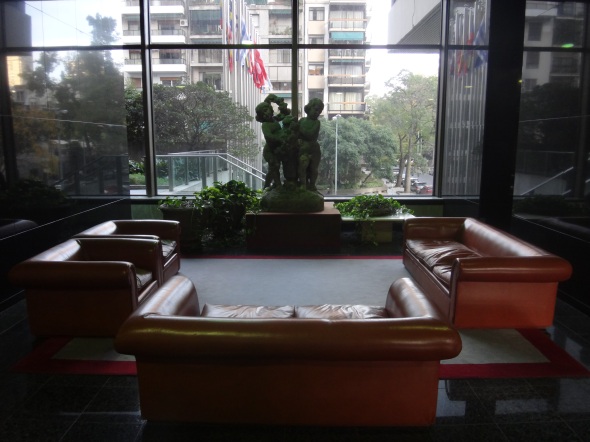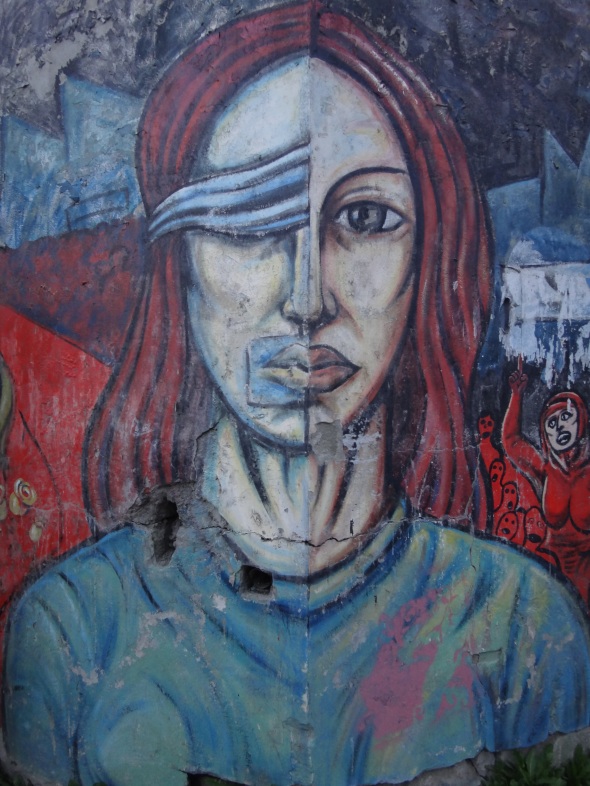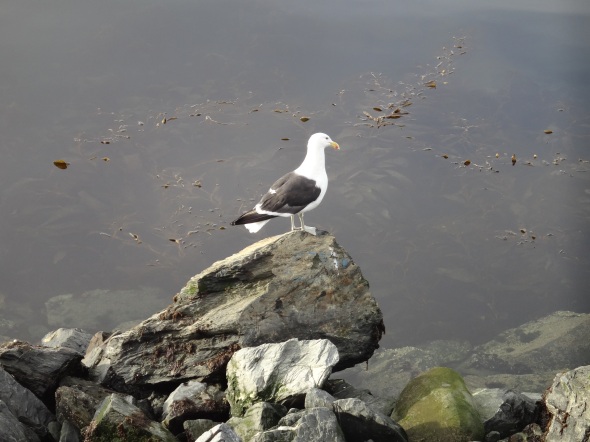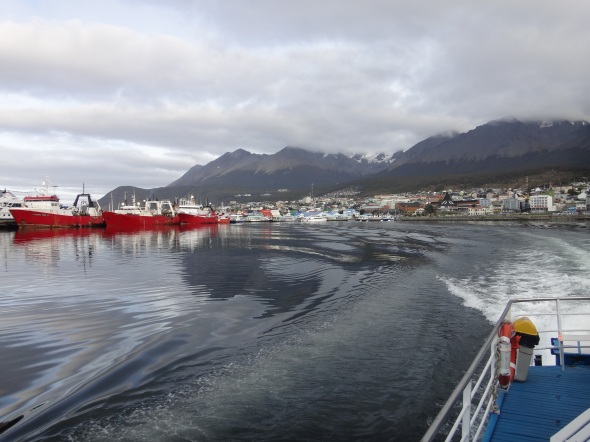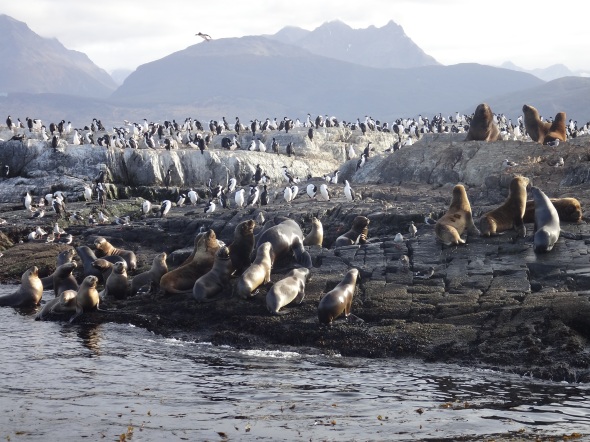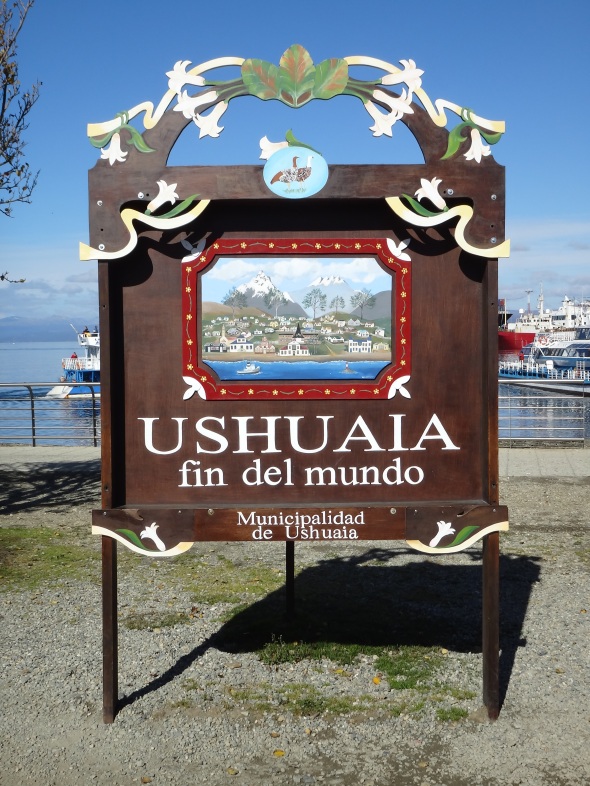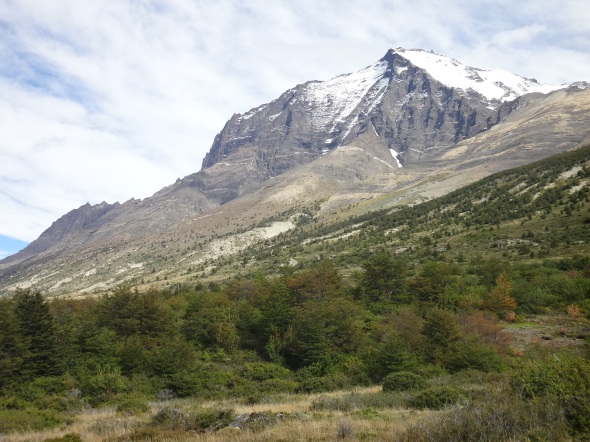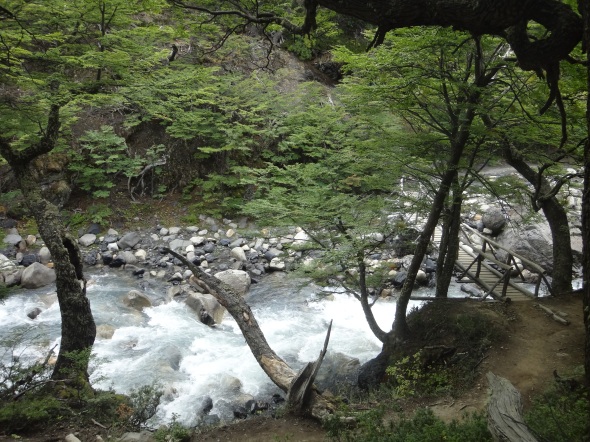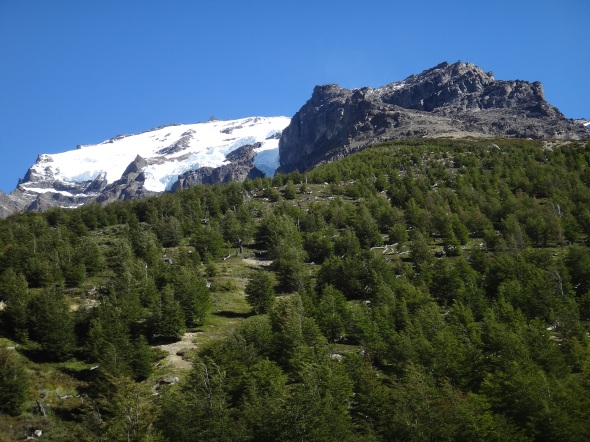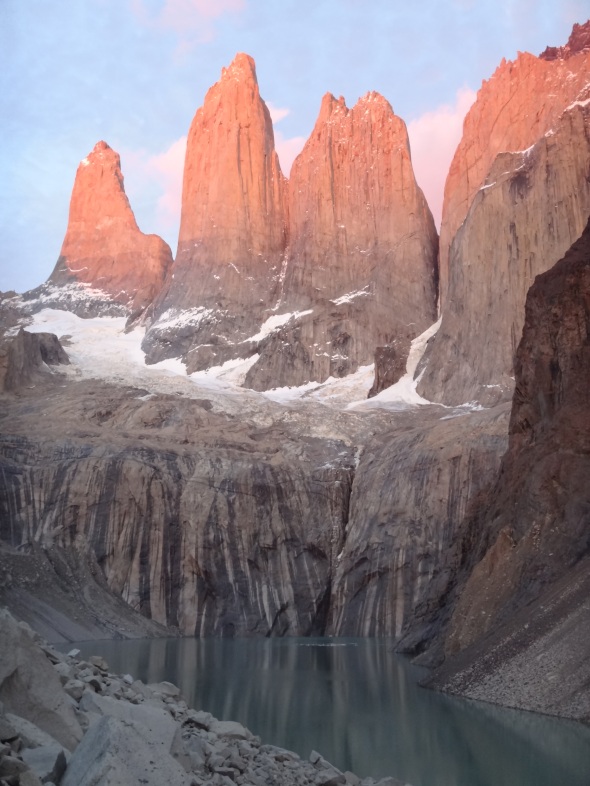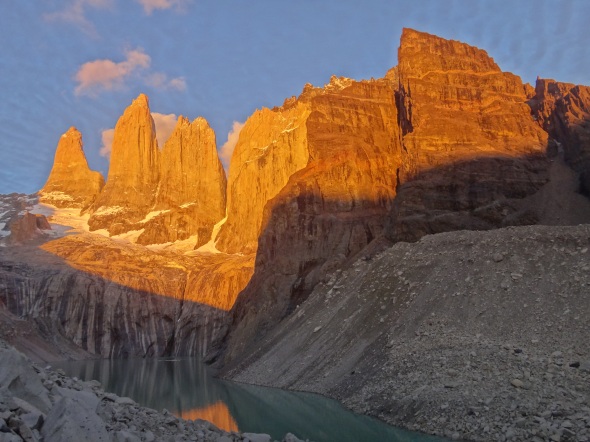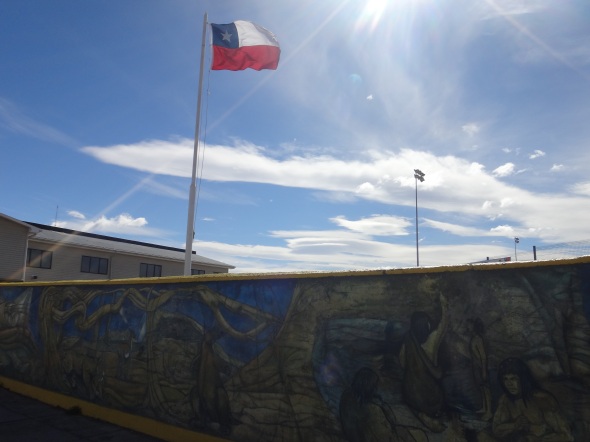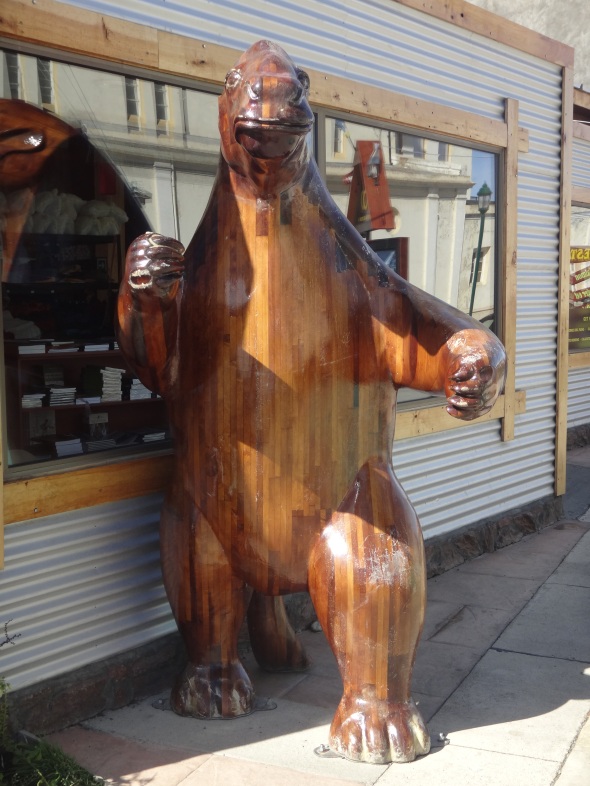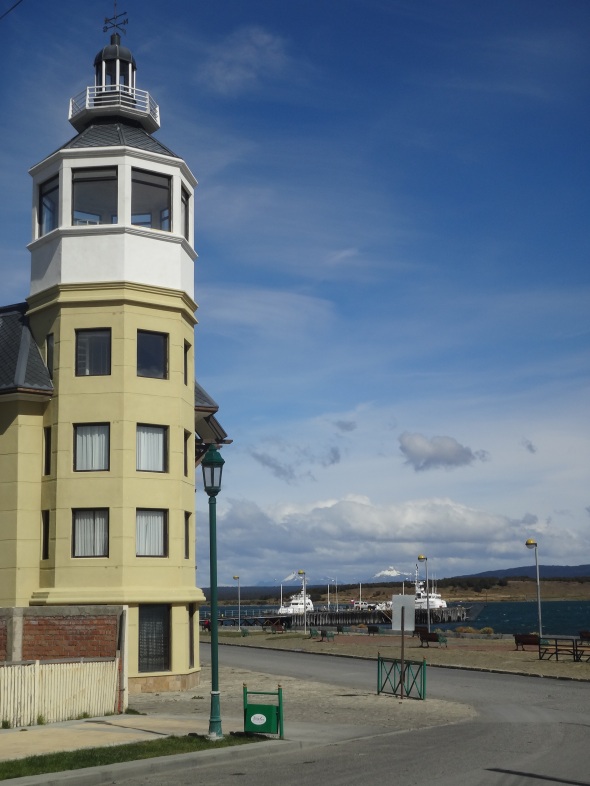The province of Salta had a lot to offer, and I fell in love with the beauty of the country and the warmth and earnestness of its inhabitants. However, the time came to venture further from Salta and head north to the province of Jujuy. Jujuy is situated in the northwesternmost corner of Argentina and borders Chile, Bolivia and a tiny bit of Peru. I struck out from my “home base” in Salta to explore this enchanting, sun-baked stretch of colored earth.
First, I set out for the Salinas Grandes, the salt flats of Jujuy. I headed north up the gently ascending mountains and descended down the other side toward an extensive plain of pure white. As I approached the salt flats, there occurred a sudden shock when the car I was riding in collided with a vicuña (a relative of the llama) that had decided that it was a good time to cross the road. Esteban (or Steve), as I named him, died quickly and without much pain by the side of that lonely stretch of road in northern Argentina, and we each mourned in our own way at his passing. The car was damaged but driveable, but when I reached the salt flats I could not open my door and had to climb across and out of the driver’s side. My brief period of mourning over, I headed out to get a look at the vast stretch of thirst inducing whiteness.
Later that day, I dined on llama for the first time. I had a moment of silence for Steve (que en paz descanse) before devouring one of his cousins.
My next journey was a long one. I traveled north from Salta into Jujuy once again. The world was transformed dramatically from the bleak, unending white of the Salinas Grandes into the lush greens and startling colors of the Quebrada de Humahuaca. My first stop was the small village of Purmamarca, situated at the foot of the “Cerro de los Siete Colores” (Hill of the Seven Colors).
At one time, Purmamarca may have been a quiet little village situated at the base of these picturesque hills, but today it has become so famous for its amazing location that it is filled to bursting with tourists and row after row of vendors, most of whom are sell the same thing as the person next to them. There are plenty of amazing, handcrafted, artisanal goods to be found across Argentina, but most of what can be found here is geared toward the tourist crowd and seems anything but genuine.
That being said, this pueblito is famous for a reason. If you can ignore the masses of tourists and find a quiet little corner of your mind to retreat into while staring, awestruck, at the amazing surroundings, it is more than worth your time.
From Purmamarca I continued north into the Quebrada, eventually ending up in the small village of Tilcara to get a look at some indigenous ruins that offered a glimpse into a time before the Spanish conquest of South America.
The Quebrada de Humahuaca stretched out farther northward still under mountains and sky, past the Tropic of Capricorn and through a hundred little moments of wonder, eventually reaching the pueblo of Humahuaca. I had a bite to eat and turned around to head back through the quebrada to the south.
On the way back to Salta, I stopped in the city of San Salvador de Jujuy, the capital of the province of Jujuy. Tired from a long trip, I only lingered long enough to have a coffee and take a few photos.
Back in Salta, I relaxed with a glass of wine and pondered the days events. I marvelled at my good fortune. Once again, I had traveled the line between dream and reality and seen things that I had never imagined possible. However, my time in the northern reaches of Argentina was drawing to a close and the moment was approaching to say goodbye to this region that I had come to adore. But I had one more adventure in front of me before boarding the bus back to the big city. What better or more poetic way to end my time in Salta than with “un salto” (A leap, saltar in spanish means to jump!) The day before my departure, I headed to the Dique Cabra Corral, a stunning body of water near the city of Salta, to finish things with a bang.
The next day, filled with satisfaction from everything that had come to pass during my time in Salta and, at the same time, filled with the pain of regret from leaving behind such an unforgettable corner of the world, I got on the bus to make the 22 hour trip back to Buenos Aires.
I ended yet another amazing journey in the best way possible: with a leap of faith. Who knows, maybe my next leap will be the leap home…
